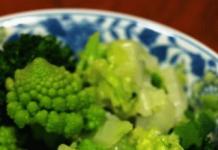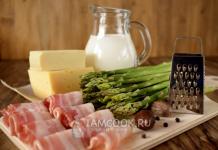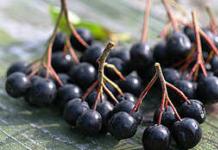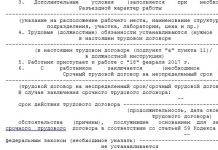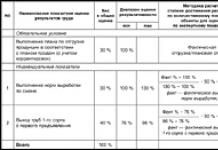Pearl, Emerald Cup, Amphora F1
Romanesco is known not only for its external distinctive features, but also for its useful qualities. This culture, due to the large amount of vitamins in its composition, is a dietary, easily digestible product and is considered a wonderful beauty product.
Moreover, this cabbage contains much more carotene, trace elements and antioxidants compared to other cabbage varieties. It contains rare minerals such as fluorine and selenium. Romanesco is a source of folic acid. That is why it is recommended to add it to the menu during pregnancy.
Despite the large number of positive qualities of this cabbage, there are also some negative properties that you need to know so as not to harm your body.
Due to the fact that this cabbage contains a large amount of fiber, it should not be consumed by people suffering from increased gas formation and bloating.
You should not combine Romanesco cabbage with mushrooms, legumes and fatty meat, as these products will be difficult to digest.
Growing
Romanesco cabbage can be grow by seedlings or seeds. For the south of Russia, the seedless method may be suitable, but in other regions it is better to grow seedlings.
Seeds are sown in May in a moderately moist hole to a depth of about 2 cm. The first shoots can be seen after 2-3 weeks.
For seedlings seeds need to be sown in the second half of April. Until the first shoots appear, the room temperature must be maintained at no higher than 20°C. And with the appearance of seedlings, after 3-4 weeks, it must be reduced to +10°C during the day and to +8°C at night. 
Young seedlings should be watered on time, preventing the soil from drying out, and maintaining moderate lighting, this will help avoid rapid stretching of the stems. Following these rules will help you get healthy and strong seedlings.
Stronger and matured seedlings are planted in a permanent place only after the threat of frost has passed. When planting, a distance of 60 cm * 60 cm should be left between plants and rows. 
Growing Romanesco cabbage is not entirely easy. Unlike other varieties, this cabbage is very whimsical and requires compliance with all growing rules. Otherwise, her heads simply won’t tie.
When planting Romanesco cabbage, it is better to choose alkaline soil, as it will die in acidic soils. Immediately before planting, the soil should be prepared. To do this, lime or wood ash (300 grams per 1 sq.m.) is added to the soil.
Romanesco cabbage will grow well if planted in areas where tomatoes, legumes, onions, and potatoes were previously grown. It should not be planted after turnips, radishes and radishes.
You can grow Romanesco in the same place for up to 3 years. It is recommended to replant in this place no earlier than 4-5 years have passed. 
Caring for this cabbage is quite simple and consists of watering the plants in a timely manner, avoiding drying out of the soil or stagnation of moisture, hilling the beds, weeding from weeds and checking for the presence of insects.
Caring for Romanesco
Romanesco cabbage preferably feed 3 times. Fertilizing must be applied correctly, since late or heavy feeding may cause the absence of heads, and in their place there will be only dense growths of cabbage leaves.
For the first time, fertilizing must be applied 7-10 days after planting the seedlings. As a top dressing, use 0.5 liters of mullein or bird droppings, 1 tbsp. a spoonful of complex fertilizers and all this is diluted in 10 liters of water.
The second time the cabbage is fed 15-20 days after the first feeding. To do this, stir 30 grams in 10 liters of water. ammonium nitrate, 2 gr. potassium chloride, 40 gr. superphosphate and 2 gr. boric acid.
The last time Romanesco cabbage is fed is when its heads begin to form. For 10 liters of water take 0.5 liters of mullein or bird droppings, 30 grams. superphosphate, 30 gr. ammonium nitrate and 20 gr. potassium chloride. 
When to collect
Harvesting occurs around October, by which time the Romanesco cabbage has finally formed tight pyramidal inflorescences. Do not delay the collection of ripe heads, as the process of rotting or drying out may begin. The most suitable time for harvesting is in the morning, before the plant warms up under the sun's rays.
The harvested crop is stored in the refrigerator for about 7 days, then it loses its nutrients and begins to deteriorate.
Romanesco can also be frozen for the winter, and it will not lose its beneficial properties at all.
Recipes - how to cook Romanesco
You can prepare Romanesco cabbage in the same way as cauliflower - bake it, add it to soups, or simply fry it in oil. Its fruits are not bitter, unlike broccoli. 
Romanesco cabbage soup
Ingredients: 450 gr. chicken fillet, 300 gr. broccoli cabbage, 300 gr. Romanesco cabbage, 1 onion, 2 tbsp. spoons 10% cream or milk, 1 tbsp. spoon of butter, pepper, salt.
The chicken breast must be boiled and cut into strips. Romanesco cabbage is steamed.
Add finely chopped onion and broccoli to the prepared chicken broth and cook over low heat for 10-15 minutes. Then the broth with broccoli is whipped, chopped meat and boiled Romanesco cabbage are added.
Everything must be mixed well and, if desired, seasoned with butter and cream.
Italian frittata with Romanesco cabbage and broccoli
 Ingredients: 150 gr. Romanesco cabbage, 50 gr. broccoli, 100 gr. hard cheese, 50 gr. cream 10%, 2 pcs. eggs, 1/2 carrots, 1/2 onions, salt, pepper.
Ingredients: 150 gr. Romanesco cabbage, 50 gr. broccoli, 100 gr. hard cheese, 50 gr. cream 10%, 2 pcs. eggs, 1/2 carrots, 1/2 onions, salt, pepper.
The cabbage must be disassembled into small inflorescences and boiled in salted water for about 5-7 minutes. Grate carrots and onions on a medium grater and fry in hot oil. In a separate bowl, beat eggs with cream.
Place carrots and onions in a baking dish, add cabbage and pour in a mixture of eggs and cream. You can sprinkle grated cheese on top. Bake for at least 30 minutes at 180°C.
Stuffed zucchini with Romanesco cabbage
The recipe is for 2-3 medium zucchini, 450 g. chicken fillet, 1 carrot, 1 small head of Romanesco cabbage, 1 onion.
For the sauce: 2 tbsp. spoons of sour cream or yogurt, dill.
Chicken meat and carrots must be minced in a meat grinder. The zucchini is cut into rings and the middle is cut out. Zucchini rings are filled with minced meat and a Romanesco cabbage inflorescence is placed in the center of each.
Bake in the oven at 180 degrees. The top of the baking sheet can be covered with a sheet of foil.
Romanesco cabbage is a vegetable that has appeared in the Russian diet relatively recently. In addition to its amazing and unusual shape, this cabbage has a unique set of minerals, vitamins, amino acids and nutrients. We will look at what Romanesco is in this article.
roman cabbage
Romanesco cabbage is a type of cultivar that belongs to the same varietal variety as cauliflower. It got its name from the places of its origin, “Romanesco” is translated from Italian as “Roman”.
Some sources claim that the history of cabbage can be traced back to the 16th century, but it is worth noting that it became widespread in international markets in the late 20th century. This cabbage resembles cauliflower in appearance, but has a light green tint. The version that this species is a hybrid of broccoli and cauliflower has not been confirmed by authoritative sources.
Description of the variety
Romanesco cabbage is an annual plant whose main distinguishing feature is its unusual shape. The inflorescences of this cabbage are arranged in the shape of a logarithmic spiral, and their number exactly corresponds to the Fibonacci number. By carefully examining each bud of the inflorescence, you can see that it consists of a large number of small copies of itself. This self-similar shape is repeated many times, becoming smaller and smaller.
A photo of Romanesco cabbage will help you understand this unique and amazing plant form. This variety contains a wide variety of beneficial substances and microelements. Let's talk about them.
This cabbage contains vitamin A, which helps the body fight various infectious diseases and has a positive effect on the health of skin, hair and nails. Vitamin K contained in cabbage gives the body vital energy and has a positive effect on blood clotting. Vitamin C has a good effect on the condition of the circulatory system and improves the process of blood reproduction.

This cabbage contains B vitamins, which improve blood circulation, as well as the functioning of the nervous system, increasing the metabolic rate. Vitamin PP normalizes cholesterol levels and prevents the development of diseases of the cardiovascular system.
Ascorbic acid helps increase stress resistance and reduces the risk of respiratory system diseases. Calcium contained in Romanesco cabbage strengthens teeth and bones, normalizes heart function and its rhythm. The iron present in this vegetable improves the functioning of the thyroid gland and improves immunity. Zinc improves regeneration processes in the body.
Other useful substances
Romanesco cauliflower, in addition to being rich in vitamins, contains a large amount of dietary fiber and minerals. Phosphorus, selenium and fluoride have a beneficial effect on the integrity of tooth enamel. Selenium protects the body from carcinogens and helps to better absorb food antioxidants. It is also found in cartilage tissue and is essential for maintaining healthy joints.

Selenium is a component of enzymes that are responsible for cell detoxification. It also has a beneficial effect on hormonal levels and improves the functioning of smooth and skeletal muscles. Romanesco is a source of folic acid, which helps the body absorb minerals and vitamins obtained from other foods, and also normalizes the functioning of the gastrointestinal tract.
Growing Romanesco cabbage
Before planting cabbage, you need to select and prepare a place for planting. The best soil for this type of cabbage is the one in which potatoes, tomatoes, cucumbers or onions previously grew. Where radishes, turnips, cabbage or lettuce previously grew, it is not recommended to plant Romanesco.

The beds for seedlings should be located on the side of the site that has the best illumination. The soil itself should not have high acidity; alkaline soil is best suited for this cabbage. To prepare the soil, it is recommended to lim it by adding wood ash to it at the rate of up to 0.5 kg per 1 m 2, and you can also treat the soil with compost.
Planting Romanesco cabbage seeds
Sowing of seeds is carried out in the middle or at the end of April. The air temperature in the room in which the Romanesco seedlings will be located must be maintained in the range from +20 to +22 °C.
After 30 days, the boxes with sprouts must be moved to a place with a lower temperature, and lighting must be controlled. If this is not done properly, the seedlings may become stretched. Watering the seedlings is carried out as the top layer of soil dries.
After 40 to 60 days from the time of sowing, the seedlings must be transferred to a permanent place of growth and planted at a distance of at least 60 cm from each other. The distance between each row should be at least half a meter.
It is also worth taking into account the climatic conditions of the region and, depending on this, transplanting cabbage so that the ovary of inflorescences occurs in early summer. The most suitable temperature for this is from +17 to +18 °C.
Cabbage care
Caring for Romanesco cabbage is simple and does not require special knowledge and skills. It requires abundant watering, but it is necessary to ensure that the soil is not oversaturated with moisture.

It is necessary to periodically inspect the plants and remove pests that may appear on them. Most often, Romanesco suffers from attacks by caterpillars that destroy the leaves. It is recommended to spray the plants with special pest control agents. You can also plant plants next to Romanesco that repel insects, such as mint, garlic, marigold or celery.
It is periodically necessary to weed and loosen the soil around the plants to prevent the appearance of weeds and to enrich the soil with oxygen. It is recommended to use organic fertilizers and mineral fertilizers, such as superphosphate, mullein, potassium chloride, ammonium nitrate and others. During the entire growth period, fertilizing is added no more than three times and in the same proportions as when caring for other varieties and types of cabbage.
Harvesting
The Romanesco variety of cabbage is harvested as the heads of cabbage fully ripen. If cabbage is planted at the beginning of summer, then in mid-October you can get a good harvest. There is no need to delay harvesting, as in this case Romanesco will lose its juiciness and taste, and the content of vitamins, minerals and nutrients in it will decrease.

It is best to harvest Romanesco in the morning, before the cabbage gets hot under the sun. After harvesting, it must be stored in the refrigerator for about seven days. It can also be frozen and eaten in winter, and the loss of nutrients will be insignificant.
By following technology and agricultural practices when growing Romanesco cabbage, you can get a good harvest in mid-autumn. Cabbage does not require any special care when growing, so you don’t have to put in much effort. By growing Romanesco, you will receive a real storehouse of vitamins, minerals and nutrients that are beneficial to your health.
Recipe for Romanesco cabbage in batter
I recently discovered Romanesco Cabbage - the product is simply incredible both in its appearance and in its taste. I think many people don’t know what it tastes and has in structure, so I’ll try to explain. Something in common between broccoli and cauliflower, but denser. Slightly sweet with a slight pleasant aroma. It’s very healthy, and it also turned out to be very tasty) The recipe is incredibly simple, but what a great lunch it turns out to be in the end) So if you haven’t tried this cabbage yet, then you definitely need to do it, and preferably quickly) So let’s get started:
Cooking Romanesco cabbage in batter:
1. I think the secret to the success of such cabbage lies in the correct preparation. The same applies to other types of cabbage, such as broccoli, Brussels sprouts, etc. This is very important, so first we disassemble the cabbage into inflorescences. Bring salted water to a boil. Place the cabbage in there and cook for about four minutes after boiling. Under no circumstances should you overcook it, because it will become too soft. Then drain the water and pour ice water over the cabbage for a minute. This way it is at the same time soft and cooked inside, but with a crispy outside. At this point, this stage can be considered complete.
2. Prepare the batter. Beat two eggs with salt. Add flour and continue whisking everything together until smooth and without lumps. I find it convenient to do this with a fork.

3. Place the sunflower oil on the fire and bring to a boil. That is, bubbles should not appear on the surface of the oil, just check it by dropping a little batter. If the oil is ready, then dip each piece of cabbage in batter and drop into the oil. Keeping it in the oil for 20 seconds is enough for the batter to set and darken. Place the finished cabbage on a paper towel to absorb excess fat. Then we'll pepper it.

4. Now let's move on to the sauce. Mix mayonnaise with garlic, passed through a press and lemon juice. Mix. You can add pepper to the sauce if you want)

5. And serve our dish still hot. I think that this option can be considered both as a side dish and as a dish on its own. I think many people will like it, so bon appetit)
Romanesco cabbage, according to some researchers, is a hybrid of cauliflower and broccoli. The product appeared on international markets in the 1990s. This unusually beautiful vegetable has a dense structure and soft green color. It looks like cauliflower and tastes like broccoli. Most often, vegetable stews, sauces and salads are prepared from Romanesco. What dishes can be made from this unusual product will be discussed in this article.
roman cabbage
Romanesco cabbage is a type of cultivar that belongs to the same varietal variety as cauliflower. It got its name from the places of its origin, “Romanesco” is translated from Italian as “Roman”. Some sources claim that the history of cabbage can be traced back to the 16th century, but it is worth noting that it became widespread in international markets in the late 20th century. This cabbage resembles cauliflower in appearance, but has a light green tint. The version that this species is a hybrid of broccoli and cauliflower has not been confirmed by authoritative sources.
Description of the variety
Romanesco cabbage is an annual plant whose main distinguishing feature is its unusual shape. The inflorescences of this cabbage are arranged in the shape of a logarithmic spiral, and their number exactly corresponds to the Fibonacci number. By carefully examining each bud of the inflorescence, you can see that it consists of a large number of small copies of itself. This self-similar shape is repeated many times, becoming smaller and smaller. 
Composition and calorie content of Romanesco cabbage
Romanesco is called not only by the place of its “small homeland”. It also has other names - coral or Romano. Because of the second name, it is even called gypsy.
Calorie content of Romanesco cabbage is 30 kcal, of which:
Proteins - 2.5 g;
Fats - 0.3 g;
Carbohydrates - 4.2 g;
Ash - 0.9 g;
Dietary fiber - 2.1 g;
Water - 89 g.
Some nutritionists believe that the calorie content is even lower - 25 kcal. 
Romanesco cabbage contains the following vitamins per 100 g:
Vitamin B1 (thiamine) - 0.1 mg;
Vitamin B2 (riboflavin) - 0.1 mg;
Vitamin B6 (pyridoxine) - 0.2 mg;
Vitamin B9 (folic acid) - 23 mcg;
Vitamin C - 70 mg;
Vitamin E (TE) - 0.2 mg;
Vitamin K (phylloquinone) - 1 mcg;
Choline - 45.2 mg;
Vitamin A (VE) - 3 mcg;
Beta-carotene - 0.02 mg;
Vitamin B5 (pantothenic acid) - 0.9 mg;
Vitamin H (biotin) - 1.5 mcg.
Minerals, macro- and microelements per 100 g:
Fluoride - 1 mcg;
Selenium - 0.6 mcg;
Manganese - 0.156 mg;
Copper - 42 mcg;
Zinc - 0.28 mg;
Iron - 1.4 mg;
Phosphorus - 51 mg;
Potassium - 210 mg;
Sodium - 10 mg;
Magnesium - 17 mg;
Calcium - 26 mg.
Do you want to lose weight? Then these articles are for you
The composition of cabbage inflorescences per 100 g contains 0.1 g of organic and unsaturated fatty acids, as well as 0.4 g of starch.
The main value and benefit of Romanesco cabbage lies in its low calorie content and the presence of the following elements:
The sodium/potassium complex provides a mild diuretic effect - excess fluid does not stagnate in the body.
Vitamin C helps the body restore its protective properties and facilitates the absorption of calcium and iron.
Folic acid stimulates the growth of new cells and increases the regenerative properties of tissues.
Potassium is responsible for water-salt and acid-base balances, regulates magnesium levels and the amount of proteins, and normalizes blood pressure.
Phosphorus performs a transport function. This macroelement is found in ATP (adenosine triphosphate, nucleotide) and transfers energy at the cellular level.
Magnesium is responsible for the functioning of organic tissues - nervous and muscle.
If you include Roman cabbage in your daily menu, you can not only enjoy its delicate nutty and creamy taste, but also replenish the reserve of nutrients in the body.
Hake with Romanesco cabbage and tarragon

The vegetable goes well with a wide variety of foods. You can cook delicious meat or fish with it.
Ingredients:
In order to bake hake with cabbage and cream, you will need the following products:
- hake (fillet) - 450 grams;
- chicken egg - 2 pieces;
- Romanesco cabbage - 400 grams;
- wheat flour - 3 tablespoons; butter (for lubrication) - to taste; cream - to taste;
- tarragon - 1 bunch.
Cooking method:
First of all, you need to cut the cabbage into small florets, then wash and dry them. After this, Romanesco should be boiled in salted water. Cooking time is ten minutes. Next, you need to cut the fish fillet into pieces and carefully place them on a baking sheet or in a baking dish. The hake layer should be greased with butter on top and sprinkled with tarragon. Then in a deep bowl you need to mix together the cream, flour, eggs, salt and pepper. Now you should pour this mixture over the fish. After this, the dish needs to be baked in the oven for half an hour. Cooking temperature: 220 degrees Celsius. Romanesco cabbage is prepared there with fish and tarragon. Recipes for preparing this vegetable will be useful to any housewife.
Salad with vegetables without mayonnaise
I suggest first preparing a salad with Romanesco and vegetables. Beautiful cabbage is sold in large stores, mainly in the cold season. 
In general, salads from fresh vegetables are frequent guests on our tables, especially if we adhere to proper nutrition and watch our figure. Not only in summer, but also in winter, you can diversify your diet with fresh vegetables, and Romanesco is an excellent vitamin product that is not a problem to buy in any supermarket. Healthy salads are best seasoned with vegetable oil with the addition of lemon juice, mustard and suitable spices.
Do you want to lose weight? Then these articles are for you
Ingredients:
- Romanesco - 1 pc. (150-180 g),
- daikon - 150 g.,
- tomato - 1 pc.,
- bell pepper - 2 pcs.,
- (200 g) dill,
- 6 sprigs grainy mustard,
- 3 tbsp. olive oil or any other
- 1-2 tbsp. freshly squeezed lemon juice,
- lemon - 1 ring,
- salt - to taste,
- ground pepper - to taste.
Cooking method:
- Buy cabbage fresh and of good quality. There should be no black spots on the inflorescences. Externally they are dense with a greenish color. Before cooking cabbage, rinse it under running water and dry it with a paper towel. Starting at the base, separate the florets from the head. The larger the cabbage itself, the larger the inflorescences will be.
- Boil enough water in a saucepan with a lemon ring. Place cabbage in boiling water. Cook for 3 to 5 minutes after it starts boiling. Accordingly, the smaller the inflorescences, the less time it will take to boil.
- Drain in a colander and rinse with cool water. Dry with paper towels.
Now it's time to prepare the sauce. In a convenient deep bowl, mix grainy mustard, oil and citrus juice.
- Peel the daikon, rinse the root vegetable and dry. Cut into thin strips, as in the photo. Add to cabbage.
- Use bell peppers of any color and variety. Remove the seeds and cut the pulp into strips. Add to other ingredients.
- Cut the washed tomato into arbitrary small pieces and add to the salad bowl.
- For the salad, use dill, parsley, basil or celery. This recipe uses dill sprigs. Rinse them and chop them finely. Add to salad bowl.
- Add salt, season with ground black pepper and pour in the prepared dressing. Stir. Salad ready. Serve immediately after cooking, as over time it loses its taste. Bon appetit!
Romanesco cabbage in cheese sauce

Ingredients for Romanesco Cabbage in Cheese Sauce:
- Cauliflower (or Romanesco) - 1 piece,
- Carrots - 2 pcs.
- Onions - 1 piece,
- Green peas - 100 g,
- Cream - 150 g,
- Hard cheese - 100 g,
- Vegetable oil - 50 ml.
Cooking method:
- Boil cabbage in salted water, separate into inflorescences.
- Cut the carrots into small cubes and boil.
- Finely chop the onion and fry with green peas in vegetable oil for about five minutes.
- Add cabbage and carrots, salt and pepper to taste, fry for another five minutes.
- For the sauce, grate the cheese, combine with cream and melt in a saucepan over low heat, pour over the vegetables, stir.
- The original recipe calls for flour for the sauce, I don't like to use it.
Do you want to lose weight? Then these articles are for you
Appetizer of Romanesco and Brussels sprouts with mustard oil and capers

Ingredients:
- Garlic - 2 cloves,
- Sea salt - to taste
- Butter - 6 tablespoons,
- Dijon mustard - 2 teaspoons,
- Capers - ¼ cup
- Lemon-1 piece,
- Ground black pepper - to taste
- Marjoram-3 tablespoons,
- Brussels sprouts 450 g.
- Cauliflower 230 g.,
- Romanesco cabbage-230g..
Cooking method:
- In a mortar, grind the garlic with a little salt to a paste. Transfer to a bowl and stir in softened butter, mustard, capers, lemon zest and marjoram. Pepper to taste.
- Cut the bottom off the cabbage heads and, depending on the size, cut them in half or into quarters.
- Bring salted water to a boil in a large saucepan. Add Brussels sprouts and cook for 3 minutes. Add the remaining vegetables and cook until soft, another 5 minutes. Drain and shake off excess liquid.
- Add to mustard oil, add salt and pepper and mix everything well.
Romanesco cabbage baked with mushrooms and cheese

Romanesco cabbage goes well with champignons; in combination with cheese and sour cream, you get a very tasty dish.
Ingredients:
- 400gr. Romanesco cabbage,
- 200gr. fresh champignons,
- 100 gr. hard cheese,
- 5 fresh chicken eggs,
- 1 head of onion,
- 100 ml. cream 10% fat,
- 1 bunch of dill,
- a few sprigs of green onions, Jillian Michaels Bodyshred workout video online
Cooking method:
Rinse the Romanesco cabbage thoroughly under running water and separate into individual inflorescences.
Boil the cabbage florets in boiling salted water for 10 minutes.
Drain the cabbage into ice water and dry.
Wash the champignons, dry with a paper towel and cut into quarters (or halves).
Place the frying pan on the fire, pour vegetable oil into it. Once the oil is hot, add the mushrooms to the pan.
Fry the mushrooms over high heat until golden brown.
Then add salt and black pepper.
Place Romanesco cabbage in a single layer in a baking dish.
Distribute mushrooms on top.
Peel the onion, cut into half rings and fry in vegetable oil until golden brown.
Place onions on top of mushrooms.
Beat eggs with a pinch of salt. Add cream and beat well again.
Pour the egg mixture over the cabbage and mushrooms. Sprinkle grated cheese on top.
Place the mold in the oven, preheated to 180 degrees. Bake the dish for 30 minutes.


